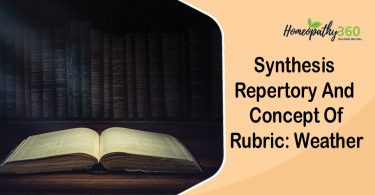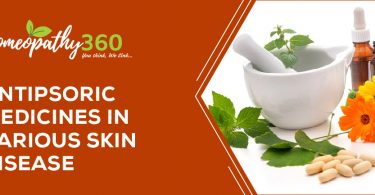Kent’s repertory, Delusional disorders and Homoeopathic medicines
Abstract: This article is an attempt of explaining Importance of Kent’s repertory in treatment of delusional disorders.
Keywords: Delusions, Repertory
Introduction: -While studying mind chapter from Kent’s repertory, I got surprised to see the details in delusion rubric. After comparing delusion against other rubrics mentioned in mind chapter of the repertory I came to know that it was the largest rubric in that chapter. Some of the details of delusion rubric mentioned in Kent’s repertory are as follows…
Total number of pages: 16 pages (Pg. no. 20 to 35)
Total number of sub rubrics: 425
Total number of medicines: More than 90 medicines for delusions in general.
Delusions in general: Arg-n, Bell, Cann-I, Cocc, Hyos, Ign, Lach, Petr, Ph-ac, Sabad, Stram, Sulph, Aco, aeth, ambr, ars, aur, bapt, calc, camph, cann – s, coff, glon, hell, kali – ars, lyc, lyss, merc, nit-ac, op, phos, plat, psor, puls, rhus-t, sec, sil, staph, valer, zinc(1).
In fact the rubrics like Anger, Fear, Anxiety and Restlessness are also not explained in this much detail. So it aroused the curiosity in me to study delusions in detail. So while going through the textbook of psychiatry I came across a topic dedicated to “Delusional disorders” only. In this article I had tried to summarise various delusional disorders and some useful homoeopathic medicines with their indications.
Introduction to delusional disorders:-
“Delusional disorders are those disorders in which the prominent symptom is delusion.”
Delusions: “These are the firm and unshakable beliefs maintained despite being contradicted by reality or rational argument typically as a symptom of mental disorder.”
Earlier delusional disorders were known as paranoid disorders. The delusions in these disorders can be of persecutory, grandiose, erotic, jealous, and somatic, mixed in primary content. Amongst these Persecutory and Jealous delusions are most commonly seen (2).
Incidence: -The mean age of onset of these disorders is 40 years. It is more common in females as compared to males. These disorders have close association with history of immigration and low socio economic status (2).
Aetiology: –
a) Exact aetiology is unknown
b) These disorders are related with various personality traits like suspiciousness, jealousy, secretiveness etc.
c) Various neurological conditions that affect limbic system and basal ganglia in brain Ex. Parkinson’s disease, Huntington’s disease, Epilepsy, Brain tumour etc.
d) It is common in socially isolated peoples and in those who have attained less than expected levels of achievement
e) Situations that increase distrust and suspiciousness
f) Situations that increase envy and jealousy
g) Situations that lower self esteem
h) Situations that cause people to see their own defects in others
i) Unfriendly family environment, over controlling mother, distant father etc.(2)
Diagnostic Criteria for delusional disorders:
According to DSM 4 Criteria the patient is said to be suffering from delusional disorders if…
1) There are non bizarre delusions of at least one month duration are present. It involves all the situations that can occur in real life Ex. Being followed, being poisoned etc.
2) There is absence of other symptoms of schizophrenia except tactile and olfactory hallucinations.
3) The delusions do not significantly impair the day to day activity of person and his behaviour.
4) The delusions are not due to direct physiological effect of drug, substance and general medical condition (2).
Types of Delusions:-
A} Persecutory delusions: – It is the most common type of delusional disorder. The delusions can be simple, elaborate, single or multiple. Ex. Being watched, being followed, being conspired against, being poisoned, being drugged, being cheated etc. These patients are often resentful, angry, and resort to violence against those they believe to be hurting them (2).
B} Jealous type delusions: – It is more common in male as compared to female. These are sudden in onset and are characterised by delusions that one’s sexual partner or spouse is unfaithful. These patients can inflict significant verbal and Physical abuse on spouse and can even kill them. These patients often collect the evidence to justify their delusions. They often confront their spouses and restrict their autonomy. They often follow their spouses, investigate the other lover. The symptoms of these disorders resolve only after the couple separates or spouse dies (2).
C} Erotomanic type: – Here the patient feels that he is loved intensely by a usually famous person Ex. Film star, local celebrity, superior at work etc. Such patients become a significant source of harassment to public figures. The symptoms are often sudden in onset and often become the central focus of affected person’s life. The efforts to contact object of delusions are very common Ex. Sending letters, gifts, making phone calls, trolling, stalking, etc. Very often such patients interpret denial of love as cryptic proof of love. Usually such patients have isolated and withdrawn life; they are usually single, have limited sexual contact and are employed in modest occupation (2).
D} Grandiose type:
These delusions are also called as megalomania. These patients have a belief that they have a great but unrecognised talent, insight; they have made a great discovery. These patients can submit the records of this discovery to various government agencies. These delusions may also have religious context and these patients can become leaders of religious cults (2).
E} Somatic type:
It is also called as monosymptomatic hypochondriacal psychosis. The patient has commonest delusions of infections ex. Bacterial, viral, parasitic. There are delusions of infestation of insects on or in the skin or dysmorphophobia or delusions about body odour coming from skin, mouth, and vagina. The patient has delusions that certain parts of body are not functioning. The incidence is equal in both sexes. Usually the patients have history of substance abuse and head injury (2).
Clinical features of delusional disorders:-
1) Disorder of thought content is the main symptom. The delusions are usually systematised and are characterised as being possible. The patient can be circumstantial, idiosyncratic in their speech when they talk about their delusions.
2) They may have difficulty in controlling their impulses.
3) Usually they don’t have insight into their condition and are almost always brought to hospital by police, family members and employers.
4) Mental status examination shows them to be remarkably normal except for presence of delusions.
5) The patient’s mood is consistent with the content of their delusions Ex. Patient with grandiose delusions have euphoric mood and patient with jealous delusions will be suspicious.
6) They don’t have prominent or sustained hallucinations.
7) They have no abnormality in memory, orientation and other cognitive process. They are usually reliable in their information (2).
Differential Diagnosis of delusional disorders:
1) Mood disorders
2) Schizophrenia
3) Delirium, Dementia
4) Substance related disorder
5) Vitamin B12 and Folate deficiency
6) Endocrinopathy Ex: Adrenal, Thyroid, Parathyroid
7) Epilepsy, Cerebrovascular disease
8) Hepatic encephalopathy
9) Hypoglycaemia, hypercalcaemia, uraemia etc.
10) Obsessive compulsive disorder, somatoform disorder, factitious disorder etc.(2)
Prognosis:-
Prognosis of the case depends upon following factors…
1) Number and nature of other stress factors.
2) Level of intelligence and premorbid personality of the patient.
3) Level of occupational, social and functional adjustment.
4) Nature of onset of the disease.
5) Usually the prognosis is favourable in female, onset before 30 years of age, sudden onset, and short duration of illness.
6) Patient with persecutory, somatic, erotic delusions have better prognosis as compared to patient with grandiose and jealous type of delusion (2).
Homoeopathic therapeutics:
1) Argentum nitricum: The patient is tormented by strange ideas and emotions. The patient is nervous, impulsive, hurried and yet timid, anxious and fearful. The patient believes that he is despised by his family and his undertaking will fail. The patient is despondent, melancholic, and impulsive and for these patients time passes slowly. The patient is irrational; he does strange and foolish things and comes to strange conclusions. He gets an impulse to jump when crossing a bridge or looking from a window. All symptoms become worse by anxiety, fear, emotions, apprehension, suspense, stress, worry etc. (3)
2) Belladona: The patient has acuteness of senses. He is delirious, excited, restless, and ferocious. The patient talks very fast. He spits on face of other person, has biting, striking and tearing mania. He sees monsters and hideous faces. He fears imaginary thins and has a desire to escape or hide him. He is very excitable and quarrelsome. He is an agel when well and devil when sick (3).
3) Cannabis indica: The patient has exalted emotions, exaggerated concepts and perceptions. Patient feels very happy and contented and feels various hallucinations and imaginations. There is loss of sense of proportion, time and space. The patient has mania of grandeur and hallucination of agonising terror and pain. There is sensation as if hot water is poured over him or drops of cold water are falling on head. The patient is very loquacious and forgetful, he can’t finish the sentence. For these patients time seems too long, these patients have fear of going to bed. They laugh immoderately at serious remark. They feel heavenly; they hear voices, bells, music etc. They have fixed ideas and thinks that everything is unreal. When they speak it seems that someone else is speaking (3).
4) Cocculus indicus: The patient is susceptible to anger, fear, grief and all mental disturbances. The complaints are brought in by ill effects of anger, fear, fright, grief, anxiety, and disappointment, mental and physical strain. There is generalised slowness in moving, talking etc. The patient’s thought are fixed on one unpleasant subject, sit as if absorbed in deep and sad thoughts and observes nothing about her. The patient is offended easily and can’t bear contradiction. He is extremely sad and taciturn. Time passes too quickly for him. He sees something alive on wall, floor, chair, etc. The patient has constant fear of death and of unknown things. (3)
5) Hyoscyamus: It produces a perfect picture of quarrelsomeness and lasciviousness. It is indicated in treatment of erotic mania. The patient exposes his genitals, he is jealous and suspicious. He sings amorous songs and does foolish things. He behaves like mad, he fears to be alone, he feels being pursued, his water being poisoned, he is being bitten etc. He laughs at everything foolishly, he is restless, wants to escape. He has a desire to strike, bite, insult, scold and kill. He talks with imaginary or dead peoples. He imagines that things are animals. Ha has a fear of being bitten by the beasts (3).
6) Ignatia amara: It is indicated in persons of nervous temperament especially in women of sensitive, easily excited nature, mild disposition, quick to perceive and rapid in execution. It is indicated for ill effects of grief, fright, worry, jealousy, disappointed love etc. The patient is highly sensitive, nervous and alert. The patient is moody, brooding, silent and sad. He enjoys being sad, has changeable mood, wants to be alone, intolerant of contradiction. He is conscientious and capricious. He has fear of thieves and things coming near to him. He is introspective, faints easily. She looks around her bed as if to find something (3).
7) Lachesis mutans: It is indicated in nervous, excitable, loquacious persons. They frequently jump from one subject to another. They have compelling delusions, they think themselves under super human control, thinks that they are dead and preparations are being made for funeral. Thinks herself pursued, hated, despised. They have persistent erotic ideas, suspiciousness, and jealousy. They are restless, uneasy, doesn’t want to attend business. Wants to be off somewhere else. They have religious insanity, talks, sings, whistle and make odd motions (3).
8) Phosphoricum acidum: The patients are quiet and unwilling to speak. They are indifferent to everything. They are apathetic from unequal struggling with adverse circumstances mental and physical. They can’t collect their ideas, hunts for words. They have poor memory, aversion to talking. They answer slowly and incorrectly. They have home sickness with inclination to weep. They have dread of future (3).
9) Stramonium: It produces marked disorders of mental faculty, hallucinations and fixed notions. It is a remedy of terrors. The patient awakes terrified, screams with fright and clings to those near him. They have dread of darkness and have terror of glistening objects. There is praying, singing, ceaseless talking. They have fearful hallucinations, they see ghosts, vividly brilliant or hideous phantoms, animals jumping sideways out of ground or running to them. They do all sorts of crazy things, they have religious insanity. They have strange, absurd ideas, thinks themselves tall, double, lying cross wise, one half of body cut off etc. their limbs feels separated from the body, they have fear and anxiety on hearing water run. They have aversion to all fluids. They are maniac, curses, tears clothes and have violent speech. They want to kill people or themselves. Wife thinks that husband is neglecting her, man thinks that his wife is faithless (3).
Conclusion: The incidence of purely delusional disorders is relatively uncommon; as it has varied aetiologies and multiple differential diagnoses. These disorders remain unnoticed, hence under diagnosed and untreated. Very often such patients are brought to specialist either by family members, police and employers or are sent by the court. Very often these delusions are deeply rooted and hence require holistic health care, trust building and family counselling also. Dr. Kent has studied these delusions in minute detail and hence Kent’s repertory and Kent’s materia medica will be immensely helpful for the interested homoeopathic practitioners.
References:
1) Kent, J. T., Repertory of Homoeopathic materia medica and word index, Reprint edition, B. Jain publisher (P) Ltd. New Delhi, 2004, Pg. No. 20 – 35
2) Kaplan and Sadock’s Synopsis of psychiatry, 8th edition, Lippincott Williams and Wilkins publishers, Maryland USA, 1998.
3) Phatak S. R., Materia medica of homoeopathic medicines, 2nd revised and enlarged edition, B. Jain publishers (P) ltd. New Delhi, 1999.
Author: Dr. Kirtida Devesh Desai
BHMS MD (Hom)
Professor & PG Guide– Practice of Medicine
Jawaharlal Nehru Homoeopathic Medical College
Parul University
At. Po. Limda, Tal. Waghodia
Dist. Vadodara, Gujarat state
Pin no. 391760
Phone no: 09574424363
Email Id: [email protected]
Co Author: Dr. Pathak Amol Pramodrao
BHMS MD (Practice of Medicine) MA (Psy.) Ph. D. Scholar
Assistant Professor- Practice of Medicine
Jawaharlal Nehru Homoeopathic Medical College
Parul University
At. Po. Limda, Tal. Waghodia
Dist. Vadodara, Gujarat state
Pin no. 391760
Phone no: 09890410270
Email Id: [email protected]





